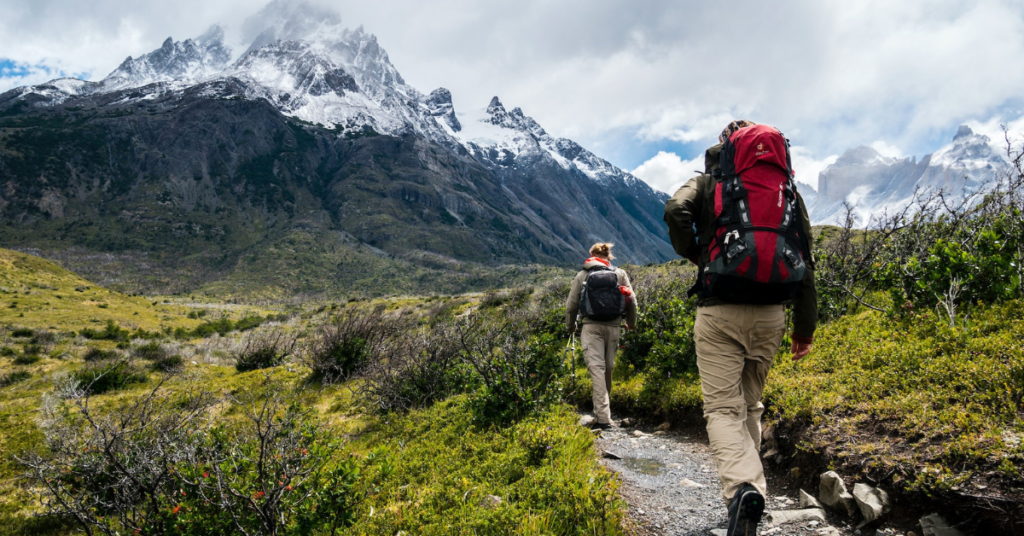Last updated on March 27th, 2024 at 08:48 pm
Hiking is a wonderful way for women to connect with nature, stay active, and embark on exciting adventures. As we enter 2023, the hiking community continues to grow, and more women are taking to the trails. Whether you’re a seasoned hiker or a newcomer to the hiking scene, these top women hiking tips for 2023 will help you make the most of your outdoor experiences while staying safe and comfortable.
Table of Contents
1. Plan Your Hikes Carefully
Effective planning is the foundation of a successful hike. Before heading out, research the trail thoroughly. Pay attention to the trail length, elevation gain, difficulty level, and any potential hazards. Websites, hiking forums, and guidebooks can be valuable resources for gathering information about your chosen trail. Additionally, always check the weather forecast for the day of your hike to ensure safe conditions.
2. Choose the Right Trail
Select a trail that aligns with your fitness level and hiking experience. If you’re new to hiking, start with shorter, well-marked trails with minimal elevation gain. As you gain confidence and experience, gradually progress to more challenging hikes. Don’t underestimate the importance of matching the trail to your abilities to ensure an enjoyable experience.
3. Hike with a Companion or Group
While solo hiking can be incredibly rewarding, consider hiking with a companion or group, especially if you’re new to the activity or exploring unfamiliar terrain. Hiking with others and joining womens hiking trips provides added safety, camaraderie, and the opportunity to share the adventure.
4. Share Your Plans
Always inform someone you trust about your hiking plans. Share your intended route, estimated return time, and any emergency contacts. This precaution ensures that someone knows your whereabouts and can take action in case of unforeseen circumstances.
5. Gear Up Thoughtfully
Having the right gear can make all the difference in your hiking experience. Pay special attention to gear designed for women, as it is often tailored to better fit female body shapes. Key items include:
- Hiking Boots or Shoes: Invest in comfortable, well-fitting hiking boots or shoes with excellent traction to prevent slips and blisters.
- Clothing: Dress in moisture-wicking, layered clothing suitable for the weather conditions. Consider quick-drying fabrics and opt for clothing that provides sun protection.
- Backpack: Use a well-fitting backpack to carry essentials like water, snacks, a first-aid kit, a map, and extra clothing.
- Navigation Tools: Carry a map, compass, or GPS device to help you stay on track.
- Sun Protection: Protect yourself from the sun with sunscreen, sunglasses, and a wide-brimmed hat.
- Emergency Supplies: Pack essential items such as a whistle, a flashlight, a multi-tool, and a fire starter.
- Hydration System: Ensure you have an adequate supply of water and consider a hydration reservoir or water bottles for convenience.
- Food and Snacks: Pack energy-rich snacks like trail mix, granola bars, and dried fruits to keep your energy levels up.
6. Prioritize Safety
Safety should always be a top priority when hiking. Familiarize yourself with basic wilderness first-aid skills, and carry a first-aid kit with essential supplies. Be aware of your surroundings and listen to your instincts. If a situation doesn’t feel safe, turn back or seek shelter.
7. Start Early
Begin your hikes early in the day, especially if you’re tackling a longer trail. Starting early maximizes daylight hours, reduces the risk of hiking in the heat, and increases your chances of encountering wildlife.
8. Leave No Trace
Adhering to Leave No Trace principles is crucial to minimize your impact on the environment and preserve the beauty of natural areas. Always pack out all trash, avoid disturbing wildlife, and stay on designated trails to protect fragile ecosystems.
9. Stay Hydrated and Nourished
Maintaining proper hydration and energy levels is essential for a successful hike. Drink water regularly, even if you don’t feel thirsty, and consume high-energy foods to sustain your stamina. Avoid alcohol and caffeine, as they can contribute to dehydration.
10. Know Your Limits
Listen to your body and know your limits. If you start feeling fatigued, dizzy, or unwell, it’s crucial to recognize these signs and consider turning back or taking a break. Pushing beyond your limits can lead to injuries or exhaustion.
11. Carry the Ten Essentials
The Ten Essentials are a set of items and skills that every hiker should have on hand. They include navigation tools, sun protection, insulation, illumination, first-aid supplies, fire-starting materials, a multi-tool, nutrition, hydration, and an emergency shelter. Packing these essentials ensures you’re prepared for various situations.
12. Be Wildlife Aware
While encountering wildlife can be a thrilling part of hiking, it’s essential to observe animals from a safe distance. Never approach or feed wildlife, as it can be dangerous for both you and the animals. Familiarize yourself with the wildlife in the area and know how to react if you encounter them.
13. Practice Trail Etiquette
Hiking etiquette is about being considerate of other hikers and preserving the natural environment. Yield the trail to those going uphill, keep noise levels down, and respect other hikers’ space. Share the trail and contribute to a positive hiking experience for everyone.
14. Stay Informed About Trail Conditions
Stay updated on trail conditions by checking for trail closures, maintenance updates, or other important information before your hike. Local hiking organizations, park websites, and trail-specific forums can provide valuable information.
15. Trust Your Intuition
Finally, trust your instincts when hiking. If something doesn’t feel right or you’re uncomfortable with a situation, it’s okay to turn back or take a different route. Your safety and well-being should always be your top priority.
As we venture into 2023, more women are embracing the joys of hiking and exploring the great outdoors. By following these top women hiking tips, you can make the most of your hiking adventures while staying safe, comfortable, and connected to nature. Whether you’re hiking solo or with friends, these tips will help you create memorable experiences and continue to enjoy the beauty of the natural world.
Related Articles:







